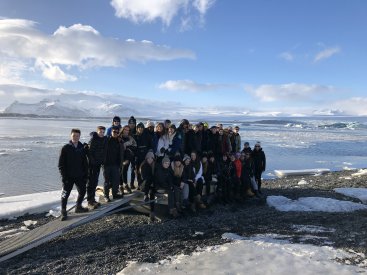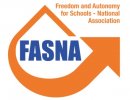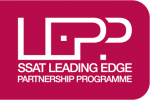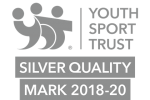Health and Safety in the Science Department
In the Science block there are obviously some risks which need to be monitored and managed constantly. It is our aim to ensure that all students feel safe and secure in science lessons and never come to any harm. All students can ensure this by being sensible at all times and following teacher instructions and the basic laboratory rules below.
- Never eat or chew in the laboratories (microbiological risk)
- Never run in the laboratory
- Always stand for practical activities
- Follow instructions carefully during practical activities
- Allow equipment to cool down before tidying away
- Wash hands following practical activities
- Report spills and accidents to the teacher immediately
- Never leave equipment (especially Bunsen burners) unattended
- Always wear safety equipment in the correct way
- Keep work area tidy
We have an excellent record of Health and Safety in the department and are always looking to improve this.
Below is a document which describes in detail the Health and Safety measures of the department.
Arden Academy
Health and Safety in the Science Department
All students study Science in one of eleven teaching laboratories and are expected to participate in experimental lessons following the guidelines set out in both the school and departmental Health and Safety Policies.
There is a departmental Health and Safety policy which should accompany this document. It is to record the arrangements made in the science department to implement the policy in accordance with the Code of Practice or Guidance issued by the employer.
The policy document is maintained by the Science department. It is copied to all new members of staff, ie, teachers, technicians, trainees working in the department. Staff are expected to sign the list kept in the prep room to show that they have received a copy. A reference copy, together with various Appendices, is kept in prep room available for consultation by staff and for inspection by visiting HSE inspectors or a representative of the employer.
2.0 General aims
Science teaching has an excellent Health & Safety record and this department is keen to promote practical work as an essential component of good science teaching. It is determined that spurious concerns about Health and Safety should not be allowed to inhibit good teaching. However, it is the duty of all members of the Science staff, ie, teachers / staff who work in the department occasionally, technicians, teaching assistants and other support staff (eg, special needs and bilingual staff) and trainees:
- to take reasonable care for the Health and Safety of themselves and other persons who may be affected by their acts or omissions during work;
- to be familiar with this health & safety policy by periodic reference to it;
- to look out for any revisions;
- to follow its provisions, and
- To cooperate with other members of staff in promoting Health and Safety.
3.0 Health and Safety roles
3.1 Duties, functions and tasks
The employer, Arden Academy, has the ultimate duty to ensure the Health and Safety of employees and others on the site (and hence in this department).
The task of overseeing Health and Safety within the Science Department is Dr Lauren Hayes (Acting Head of Department) further delegated to Science Technician Mrs Lynne Allen who has the particular function of maintaining this policy document alongside Dr J Cannadine.
3.2 Communications
A reference copy is kept in all teaching labs plus a further copy in the prep room together with any Appendices.
4.0 Training policy
The person with the task of seeing that training is provided is the Head of Department
Generally, this department follows guidance in the CLEAPSS documents L238, Health and Safety Induction and Training of Science Teachers and L234, Induction and Training of Science Technicians, suitably customised, to identify the training needs of staff. These documents are located and referred to via the CLEAPSS website
Particular training functions are delegated as follows
|
Health & safety aspects of the work of newly-qualified teachers and other new teachers |
The Head of Department |
|
Health and Safety of trainees on teaching practice |
The Head of Department |
|
Induction of newly-appointed technicians |
The Head of Department /Science Technician |
|
Immediate remedial measures and other emergency procedures (spills, bench fires, etc) Signing of the first aid book if required |
All science staff |
|
Training in the use of specialist equipment, chemicals or procedures (in line with CLEAPSS guides L238 and L234, as customised) |
The Head of Department /Science Technician |
|
Health & Safety training of non-science support staff |
The Head of Department /Science Technician |
|
[Health and Safety of non-science teachers using laboratories] |
The Head of Department /Science Technician |
|
Manual handling for all staff using laboratories |
The Head of Department /Science Technician |
|
Healthy and safe procedures for laboratory cleaners |
Their Contract employers |
|
Regular update training (covering new or changed regulations, new equipment etc) |
The Head of Department /Science Technician |
5.0 Risk assessments
Because it is impracticable for the employer to write risk assessments for each of the many activities in school science, this employer follows the recommendation of the Health and Safety Commission to adopt published 'model' or 'general' risk assessments which we have adapted to the requirements of this department. Please see science risk assessment folder
The following are publications currently being used by the science department from CLEAPSS to assist in the safe running of the laboratories and are located in the prep room
- [CLEAPSS, Hazcards, current edition]
- [CLEAPSS, Recipe Cards, current edition]
- [CLEAPSS, L93, Managing Ionising Radiations and Radioactive Substances, (under revision, 2007)]
The following documents are located on the CLEAPSS website and referred to as required.
- [CLEAPSS, Laboratory Handbook, current edition]
- [ASE, Safeguards in the School Laboratory, ASE, 2006 (Eleventh Edition), ISBN 978-0-86357-408-5]
- [ASE, Topics in Safety, ASE, 2001 (Third edition), ISBN 0863573169]
- [DfEE, Safety in Science Education, HMSO, 1996, ISBN 011270915X]
- [CLEAPSS 2 publications generally]
If a model risk assessment for a particular operation involving hazards cannot be found in these texts, a special risk assessment is obtained, or carried out, In order to assess the risks adequately, the following information is collected.
- Details of the proposed activity.
- The age and ability of the persons likely to do it.
- Details of the room to be used, i.e., size, availability of services and whether or not the ventilation rate is good or poor.
- Any substance(s) possibly hazardous to health.
- The quantities of substances hazardous to health likely to be used, including the concen­trations of any solutions.
- Class size.
- Any other relevant details, e.g., high voltages, heavy masses, etc.
Since the scheme of work/set of lesson plans/syllabus has been checked against the model risk assessments, staff should deviate from it only if their proposed activities have been also checked with the risk assessment/agreed with the Science technician. KS4 students are often asked to plan an experiment and check against recommended COSHH guidelines.
We encourage the development of new practical activities (including on open evenings, at science clubs, etc) but these should be undertaken only after a prior check against model risk assessments and / or a special risk assessment has been obtained.
6.0 Equipment and resources
6.1 Fume cupboards
The COSHH Regulations require the regular testing of fume cupboards (maximum interval 14 months) with a quick check before use. Testing normally takes place each year in June/July the Head of Science /science Technician has the function of seeing that this happens. This employer has arranged a contract with safelab who will be allowed access to carry out the tests. The records of the tests are available for staff reference and for inspection by the employer's representative or an HSE Inspector kept in the prep room
All users have been trained to carry out a quick check that a fume cupboard is working before use.
No smoking of cigarettes is permitted in the school. However, demonstrations of a 'smoking machine' are permitted in fume cupboards in designated laboratories.
6.2 Electrical testing
To meet the requirements of the Electricity at Work Regulations Which can be found onthe CLEAPSS website, this employer requires portable electrical equipment to be inspected and tested regularly. the electrical testing is currently undertaken by DODD group. The Head of Science /science Technician has the function of seeing that this happens within the science department. Testing normally takes place each year in June / July
This employer has arranged a contract with Dodd group who must be allowed access to carry out the work. This work will be carried out by the trained technician using a proper earth-bonding and insulation test set, following procedures in the CLEAPSS Laboratory Handbook each individual equipment is stamped with a pass / fail sticker as reference for safe use staff reference and for inspection by the employer's representative or an HSE Inspector.
All users have been trained to carry out a quick visual inspection before using mains-powered equipment.
6.3 Radioactive sources
The employer's Radiation Protection Adviser (RPA) - Graham Hart of CLEAPSS, the local authority's Radiation Protection Officer (RPO) - Roy Pekeman and the Teacher in Charge of Radioactive Sources Richard Smith (Radiation Protection Supervisor, RPS) liaison with the RPA is via the RPO, not direct.
This school follows the guidance in CLEAPSS Guide L93 Managing Ionising Radiations and Radioactive Sources.
Radioactive Sources and Log Book are now stored in a safe box in one of the Laboratory cupboard.
The Standard Operating Procedures / Local Rules for the use of ionising radiations have been adapted from the CLEAPSS model /drawn up in consultation with the [RPA] / [RPO] and it is a function of the Teacher in Charge to see that they are adhered to. The L93 policy is located in the prep room for reference.
The Radioactive Sources History (i.e., authority to purchase, record of delivery, details of events in the life of the source and eventual certificate showing method of disposal) is kept in the prep room.
Use Log (showing the times that any sources are removed from and returned to their store) is kept in the prep room.
The Monitoring Record of tests for leakage of radioactive sources and contamination is kept in the prep room. Testing normally takes place each year in June / July
It is the function of the Richard Smith / [RPS] to ensure these records are all kept up to date.
6.4 Pressure vessels
We only have a steam engine which is checked for safety every time it is used before going in to lessons
6.5 Animals, plants and micro-organisms in schools
The hazards associated with the use of animals, plants and micro-organisms are discussed in the texts listed in section 5 which also give advice on controlling them. This advice will be followed and any queries referred to the subject specialist for biology.
6.6 Equipment safety
All staff selecting equipment for purchase will check that it is safe and suitable for the intended purpose (to comply with the Provision and Use of Work Equipment Regulations) which can be found on the CLEAPSS website. Equipment listed by specialist educational equipment suppliers is taken to meet these Regulations but all other equipment, especially gifts, is treated with caution and carefully assessed. Advice on safety and suitability is sought from CLEAPSS/ the local authority health & safety science adviser or through publications.
Any user who discovers a hazardous defect in an item of equipment must report it to the HOD.
6.7 Personal protective equipment
The employer accepts the duty to provide eye protection, gloves and laboratory coats for employees where the risk assessment requires them (Personal Protective Equipment at Work Regulations) Which can be found on the CLEAPSS website. Prescription safety spectacles are to be ordered from any optician and the employer will meet the extra / full cost of the safety features. Laboratory coats are supplied by the employer / and laundered by the school
The employer expects eye protection to be available for pupils / students and visitors. Safety spectacles are provided for general use, with a set of goggles or face shields used whenever the risk assessment requires them. Goggles or face shields to chemical-splash standard are worn whenever there is a risk to the eyes.
The condition of the eye protection is checked regularly. A set of 30 is kept in each teaching area plus over-sized goggles for those students who wear glasses.
6.8 Chemicals
Offers of gifts of chemicals are viewed with extreme caution to ensure that stocks are not increased unduly and that no unwanted chemicals are included.
The task of arranging safe storage of chemicals (and, where necessary, disposal), including highly-flammable liquids, in accordance with the requirements of the Dangerous Substances and Explosive Atmospheres Regulations (DSEAR) Which can befound on the CLEAPSS website is given to the science Technician / Head of Department who will ensure that chemicals are stored securely, the risks of fire, explosion and spillage are minimised, labels are readable and that a spill kit is available and properly replenished.
Hazardous activities involving chemicals restricted to those who have received special training are identified in the texts in daily use as part of the risk assessment (see section 5, Risk assessments).
6.9 Waste disposal
Waste chemicals and equipment are disposed of in an environmentally-responsible manner in accordance with relevant legislation. Chemical disposal follows guidance on CLEAPSS Hazcards (2007 edition or later). Other disposal follows guidance in the relevant section of the CLEAPSS Laboratory Handbook.
7.0 Activities and procedures
7.1 Outdoor activities
When planning any field trips etc, staff consult one or more of the following the employer's code of practice / CLEAPSS Laboratory Handbook / DfES Health and Safety of pupils on educational visits and supplementary guidance which can be found on the CLEAPSS website
7.2 Manual handling and working at height
All regular operations involving lifting or carrying equipment, pushing trolleys, etc will be assessed to see if any may give rise to risks of injury using Manual Handling Operations Regulations which can be found on the CLEAPSS website
it is sometimes necessary to carry chemicals or equipment through heavy fire doors, we have assessed risks under both the Manual Handling Operations Regulations Which can be found on the CLEAPSS website and will always use two people, one to hold open the door, the other to carry the items. Or we will prop open the fire door using wedges / hooks We will endeavour to keep the fire door closed as much as possible by removing the prop as soon as practicable.
Occasional (ie, one-off) manual-handling operations will be assessed by the staff member(s) before attempting them. Problems will be reported to the Head of Department.
Where possible nothing is stored or displayed above head height. / Following risk assessments under the Work at Height Regulations Which can be found on the CLEAPSSwebsite, when it is impossible to avoid storage or display above head height, glass or other fragile items are never stored above head height and only light-weight and rarely-used items are stored there. When displaying items at high level or fetching or replacing items stored at high level, step ladders or kick stools are used; staff never climb onto laboratory stools or benches.
7.3 Security
Access to laboratories and preparation rooms will be controlled to comply with the Management of Health & Safety at Work Regulations which can be found on the CLEAPSSwebsite. All laboratories / preparation rooms / store rooms are to be kept locked at all times except when in use. It is the task of the staff member leaving such a room to see that the room is empty and that the door is locked. / All laboratories which are left open are cleared of all hazards, including shutting-off all services when supervision by a qualified science teacher / suitably-trained teacher or teaching assistant comes to an end. No class is allowed to work / be in a laboratory without supervision by a qualified science teacher, familiar with the departmental safety procedures / adequate supervision.
Any non-science staffs who have to supervise any class in a laboratory will receive brief training in laboratory rules.
7.4 Concern for others
All science areas are made safe for cleaners or contractors to work in before these persons are allowed to proceed.
8.0 Emergency procedures
8.1 Fire
Science staff will follow the normal school procedures in case of major fires. All science staff are trained to deal with minor bench fires, clothing fires and hair fires.
Advice on fire-fighting is given in sections 4 and 5 of the CLEAPSS Laboratory Handbook.
8.2 Spills
Trivial spills are dealt with using damp cloths or paper towels. Spills of any amount which do not give rise to significant quantities of toxic or highly-flammable fumes ('minor spills') are dealt with by teachers or technical staff using a 'spill kit' prepared for this purpose in accordance with section 7 of the CLEAPSS Laboratory Handbook. Spill kits are kept in the prep room.
Major spills are those involving the escape of toxic gases and vapours or of flammable gases and vapours in significant concentrations. (Small amounts can be 'major spills' if spilt in small rooms.) Staff are trained in the appropriate procedures which may involve calling the Fire and Rescue Service.
8.3 Injury
Science staff will follow the normal school procedures in cases that require first aid. Science staff are trained to carry out immediate remedial measures (eg, eye rinsing), while waiting for first aiders, after the accidents which occur in science. See the most recent edition of the CLEAPSS Laboratory Handbook section 5.
8.4 Reporting procedures
Injuries or suspected injuries to a pupil or a member of staff, dangerous occurrences and instances of damage or theft will be reported using the standard school procedures. Following an injury, so that the Regulations (RIDDOR) can be complied with Which can be found on the CLEAPSS website, the accident must be reported to the first aider as quickly as possible.
Dangerous situations and incidents which might have resulted in injury ('near-misses') should be reported to the head of department in writing these will be analysed and discussed at departmental meetings.
Website for further information about school H and S-
http://www.education.gov.uk/schools/adminandfinance/healthandsafety/f00191759/departmental-advice-on-health-and-safety-for-schools.
http://www.safety-mark.co.uk/?gclid=CMbbufPTtrgCFSTKtAod_EsAow
http://www.ase.org.uk/resources/health-and-safety-resources/
















